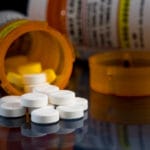December 9, 2020
An Introduction to Understanding Opioid Misuse and Addiction: Part 2
In our last post, we focused primarily on what opioid pain relievers are, their side effects, and examples of these medications. Opioids are in our news and on social media more recently because of the unintended consequences of misuse and addiction. Today, I’d like to focus on understanding how use of opioids can lead to dependency, misuse, or even addiction, and how awareness of these differences can help prevent addiction.
We know that chronic (longer than 3 months) use of opioids puts people at higher risk for developing physical dependency. This is when someone becomes dependent on a medication, stopping the medication too quickly can cause physical signs or symptoms of withdrawal.
Common symptoms of opioid withdrawal are:
- Increased generalized pain
- Cramps
- Dilated pupils
- Anxiety
- Difficulty sleeping (Insomnia)
- Chills
- Diarrhea
- Restlessness
- Nausea/vomiting
- Intense cravings

Dependency can begin to develop after as early as one month of use, so it is always smart to work with your provider and/or pharmacist before making any changes in your dose or if you consider stopping a medication. Fear of withdrawal is one reason a person may misuse their opioid prescription, but there are many other examples of misuse. To quote the Agency for Healthcare Research and Quality’s definition, opioid misuse is use in any way not directed by a prescriber, including:
- Use a prescription medication without a prescription or using someone else’s prescription.
- Use a prescription medication for more than was prescribed (more tablets), more often, or longer than told to take a medication.
- Use in any other way that was not directed by the doctor, physician’s assistant, or other medical staff provider.
We do know that, based on a study, roughly 21-29% of patients who are prescribed chronic opioids misuse them. From that same study, 8 to 12% of people with chronic opioid prescriptions developed an opioid use disorder.
The American Psychiatry Association describes opioid use disorder as “a problematic pattern of opioid use leading to problems or distress,”. Opioid use disorder might start as occasional misuse, but when misuse happens more often, this might increase the concern for an opioid addiction.
Opioid use disorder does not necessarily mean addiction; however, continued misuse is a slippery slope can lead to addiction. Opioid addiction, as defined by the National Institute of Health, is a powerful, compulsive urge to use opioids, even when they are no longer required medically, i.e. no pain or pain symptoms are present. Conditions of opioid use disorder and opioid addiction are medical issues. Recognizing addiction as a medical issue is an important way to support those struggling with addiction. You might wonder, how can we help prevent addiction?
According to a study published in the Journal of Psychoactive Drugs from 2014 that surveyed about 400 young adults between the ages of 18 and 23 who improperly misused used medications, 44 percent reported freely receiving doses of opioids from family members. Each of us can reduce the risk of improper use of our prescriptions by others in our family, by being thoughtful about where we store opioid pain medication and by discarding those prescriptions when we no longer feel pain. Some things that each of us can do in our homes to help prevent abuse are:
- Use medications only as directed, or as written on the prescription bottle
- Properly dispose of any unused/expired opioid medications (see below)
- Keep medications in safe places (i.e. a lock box or away from children/pets)
- Do not share medications that were intended for you!
These are good rules for us to follow with any prescription medications (not to mention using a prescription medication that is not prescribed to you is against the law), but they are also very simple steps we can take to help prevent the risk of misuse and addiction in our own families and homes. If you need a refresher on what examples of opioid medications are, check out my last blog post.
If you feel like you or a loved one is struggling with opioid addiction there are resources available for you. Please, visit the Wisconsin Department of Health Services website for opioid treatment resources, a hotline, and treatment program locations.
